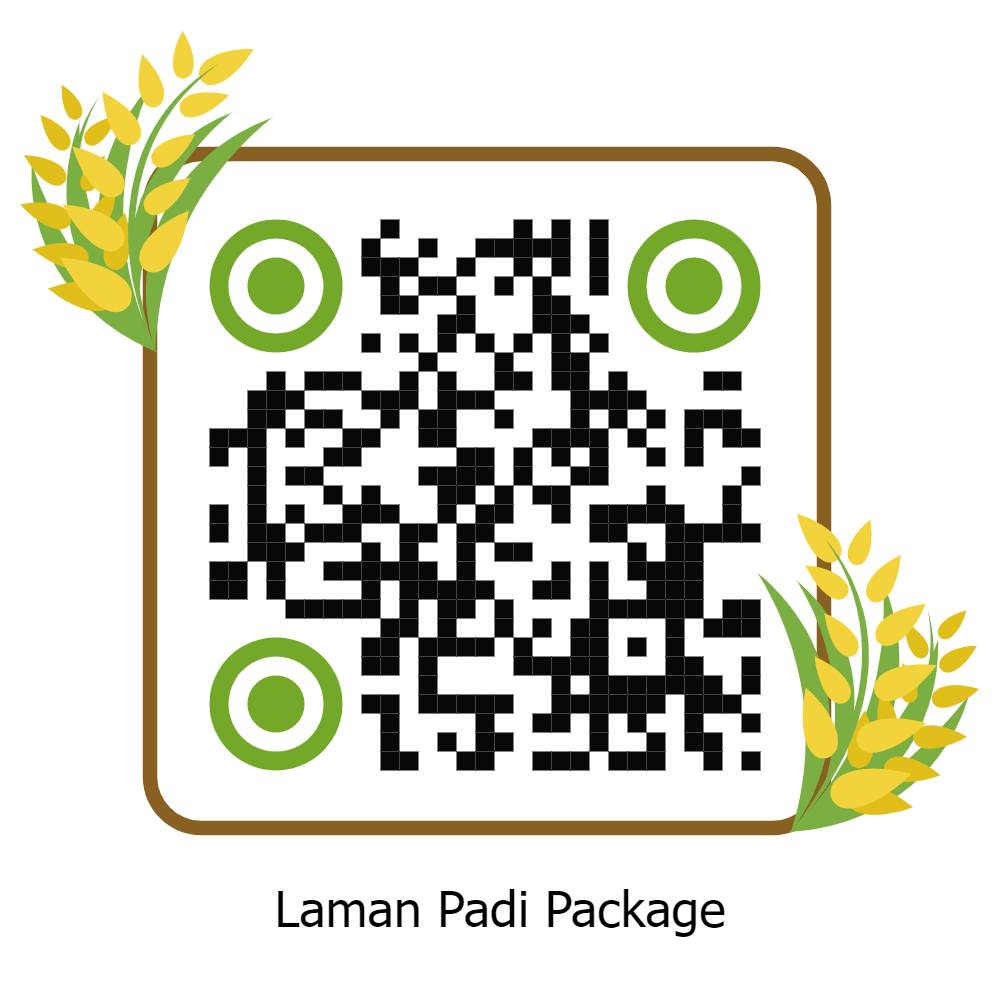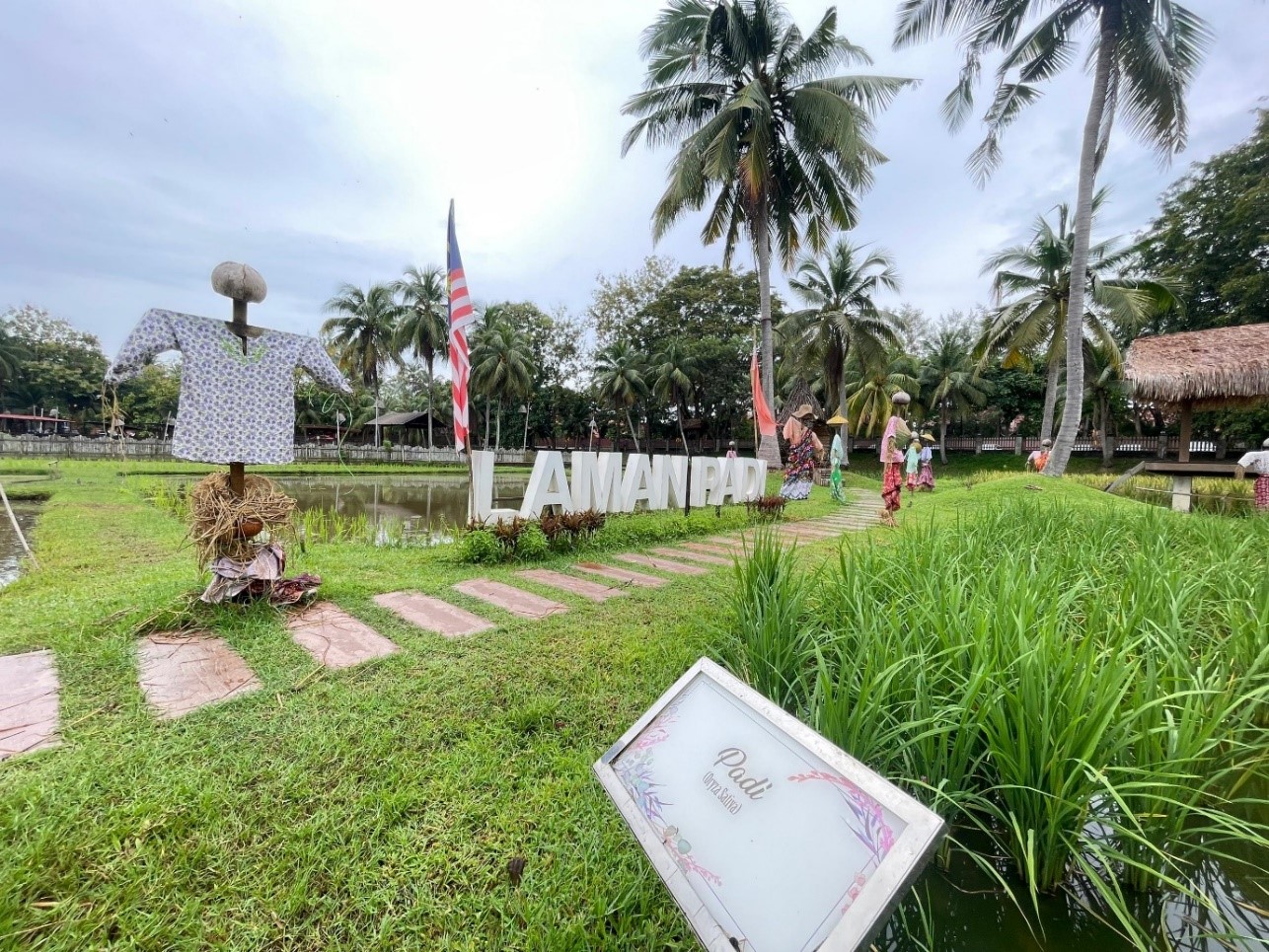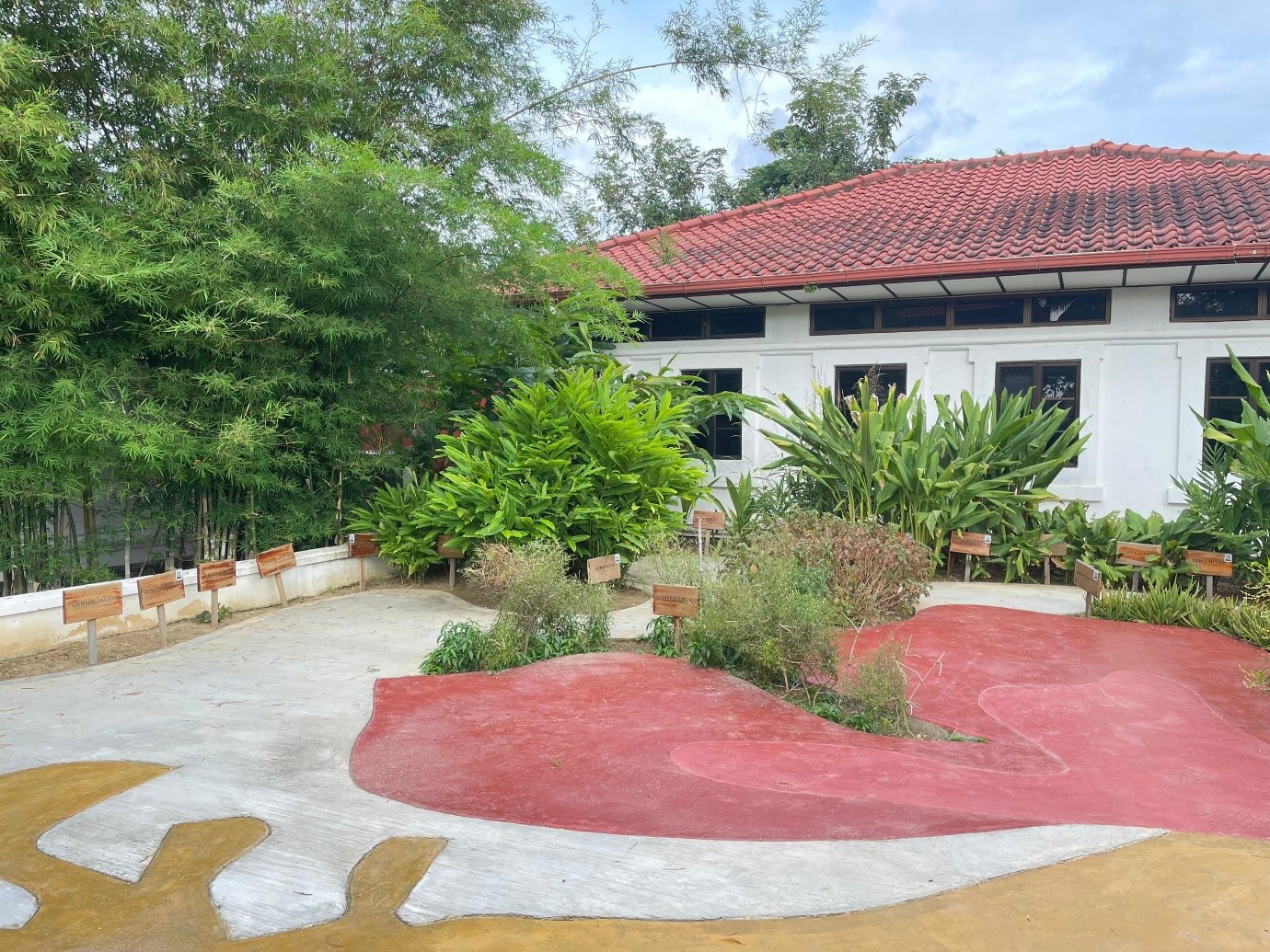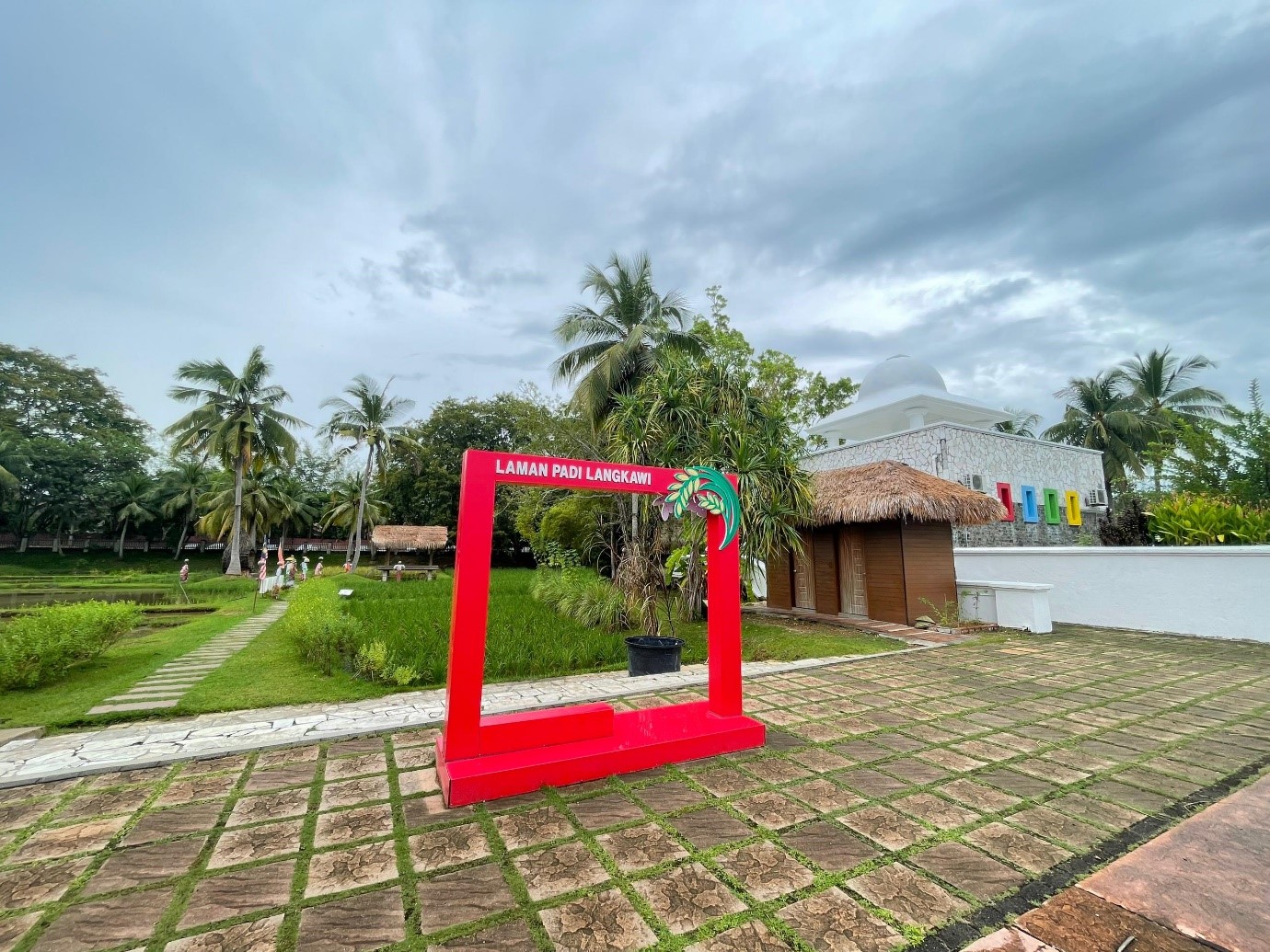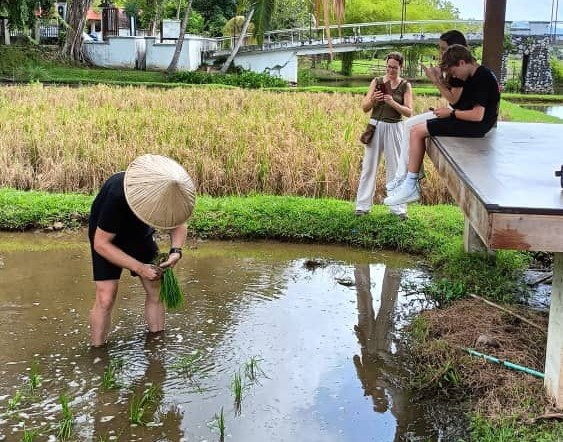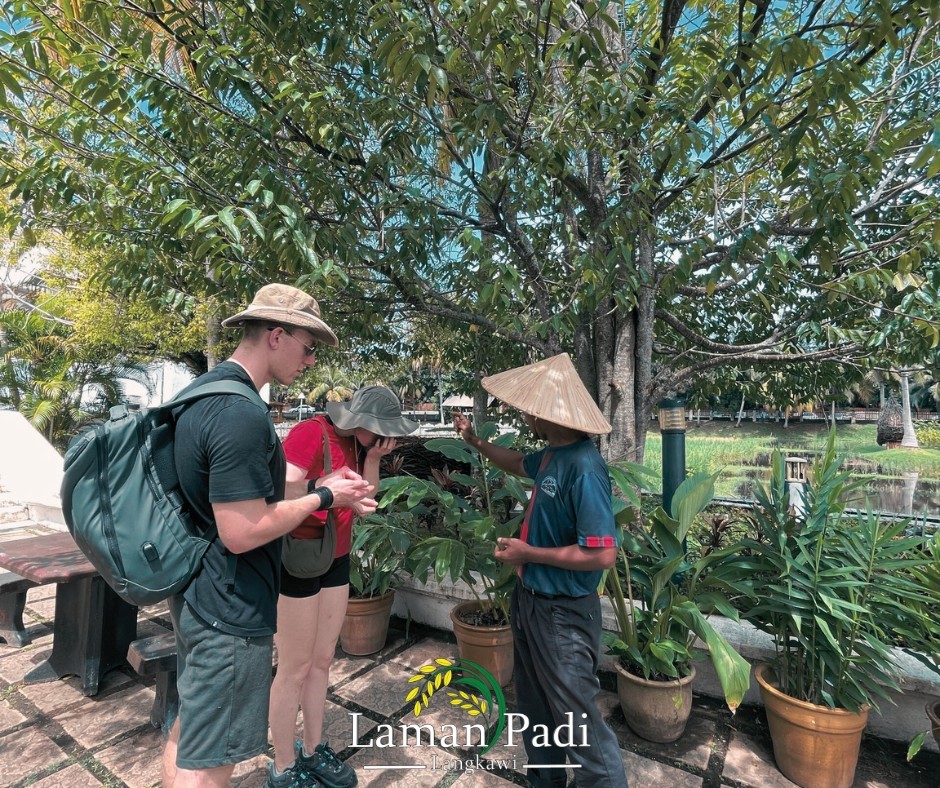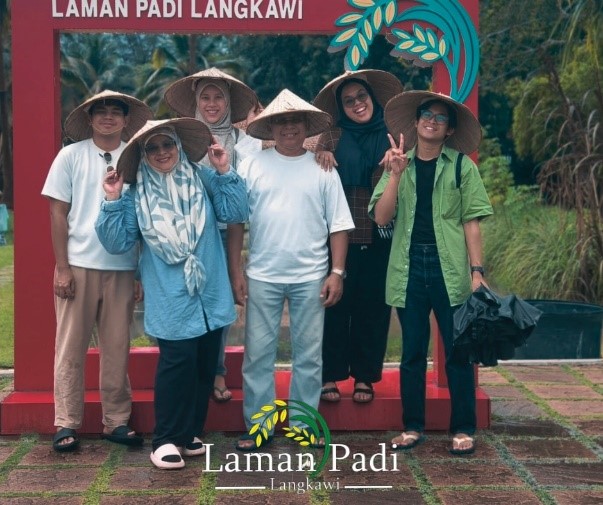LAMAN PADI
In the beautiful surroundings of Langkawi, with blue waters and green scenery, there is a peaceful place called Laman Padi Langkawi. This place invites visitors who want a genuine experience of Malaysia’s countryside.
Located at Pantai Cenang, Laman Padi is walking distance from the beach. This place is divided in various sections which consist of rice fields, herb garden and paddy gallery. Covering large areas of 8.6 acres paddy fields, this cultural site highlights the detailed process of growing rice, which is an important part of Malaysian culture. When you visit Laman Padi, you can take a deep dive into how rice is grown, with friendly locals showing you how to perform traditional farming. You also will see everything from planting the seeds to harvesting the ripe using traditional method and tools while gaining a new respect for the hard work and skill involved in rice planting.
Laman Padi also provides a one-time life experience for the tourists who visit Langkawi as they can participate directly in paddy field activities such as paddy planting, catching fish and many more. There is also a section for tourist those who like to save the moment with a photo where they can snap memorable pictures at our “instagrammable” spots. Furthermore, tourists can witness up to 20 species of birds namely Little Egrets, Common Myna, Spotted Doves, Bulbuls, Hummingbirds, Watercocks, Crows, Kingfishers, Sparrows, Baya Weavers, Pigeons, Hornbills and many others. The most ideal time to watch them is either early morning or early evening as they are most active at that time. Some of the tourist brings their professional camera to capture the majestic moment of the birds and aquatic creatures.

Highlights
Highlights of Laman Padi, Langkawi
Besides, Laman Padi is also a place for cultural exchange. Visitors can interact with local communities and gain a deeper understanding of the way of life in the past. Complete with traditional costumes and hands-on activities, every experience helps visitors connect with and appreciate Malaysia’s rich and varied heritage. Aside from initiatives aimed at preserving the natural ecosystem, the place also serves as a model for responsible tourism, inspiring visitors to appreciate the earth and embrace a harmonious relationship with nature. After a long day of exploration, the visitors can enjoy a meal at Kerisik Restaurant which is located beside Laman Padi. From aromatic rice dishes to tasty treats made from fresh ingredients, every bite highlights the flavors of Malaysian cuisine and will delight your taste buds.
To conclude, Laman Padi Langkawi shines as a symbol of preserving culture and appreciating the environment. It is more than just a tourist must-visit spot, it shows the strong spirit of Malaysia’s rural communities and invites visitors to relax, immerse themselves in nature and treasure the simple joys of life.

Natural Beauty
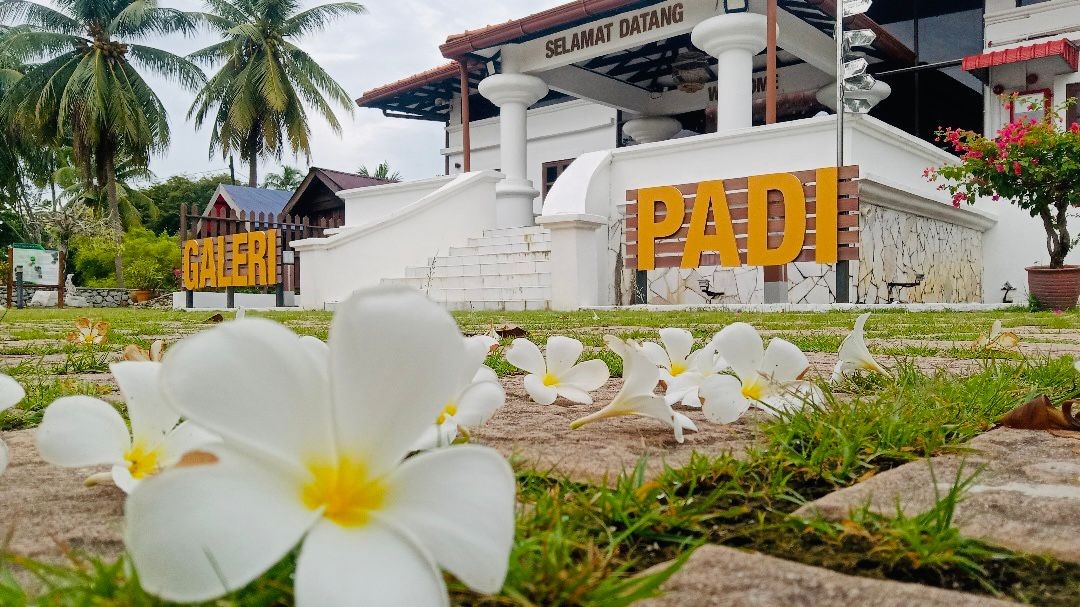
Herbs Garden
Considered a living museum which showcased a vast variety of traditional herbs, Herbs Garden is considered a major attraction for those interested to know and learn about the types and benefits of plants with its medicinal values.
The experience of actual touching, smelling and at times tasting them will definitely create awareness of the rich advantages of our local herbal plants.
There are 55 types of herbal plants grown at the garden, each with its own, medicinal and benefit values, the concept of the garden itself is to spread the awareness and knowledge to visitors of their usage and benefits in our daily lives.
Among the plants grown here are Black Sugarcane, Fragrant Lemongrass, Asian Pigeonwings, Galangal and others. Some of them can be easily found and easily grown at our own backyard.
Paddy Cultivation
The Stages of Paddy Cultivation
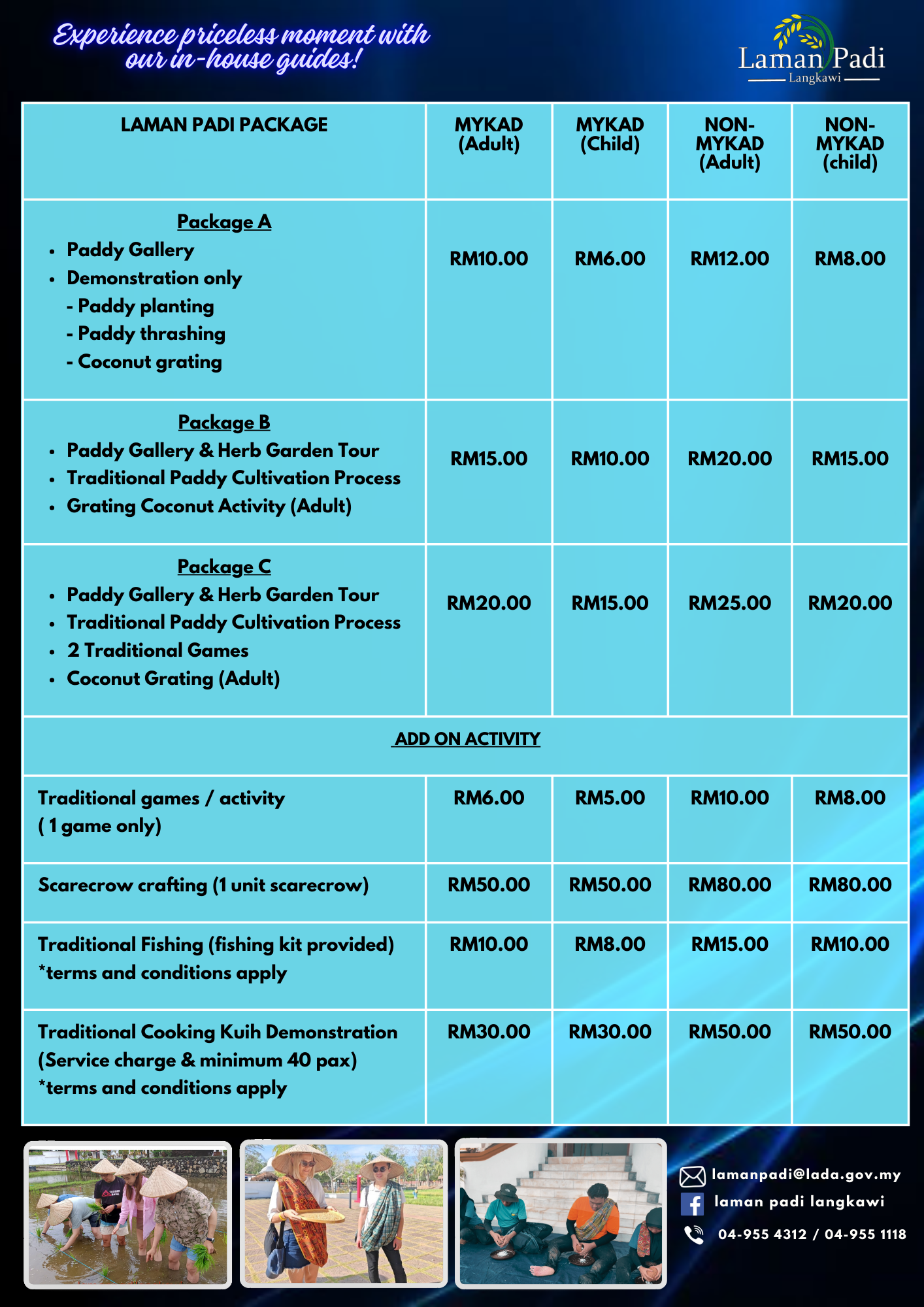
Paddy Field Birds
Diversification of Paddy Field Birds
Langkawi, with its rich concentration of diverse eco-system is home to more than 250 species of residental and migrants birds mainly from Southern Thailand and East Asia from November until January. The most suitable time to observe them is either early in the morning or early evening when they are most active. The paddy fields in Langkawi provide a nice habitat for these birds as there are plenty of water, insects and aquatic creatures for food.
At Laman Padi itself, there are 20 species of birds at the paddy fieds such as Little Egret, Common Myna, Spotted Dove, Bulbul, Hummingbirds, Chinese Pond Heron, White Breasted Waterhen, Watercock, Crow, Kingfisher, Sparrow, Baya Weaver, Lesser Whistling Duck, Magpie, Hill Myna, Pigeon, Hornbill and others.
White Stork is the most common and much spotted species at Laman Padi in huge numbers and has be known for its role in the conservation of paddy fields and its eco-system.
Get more details
